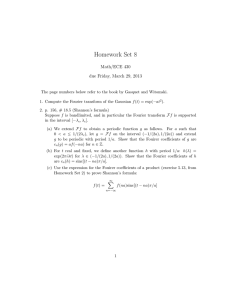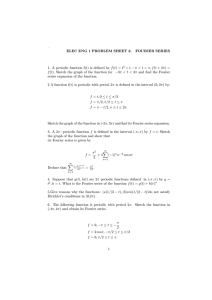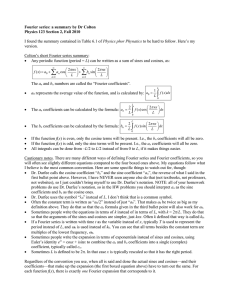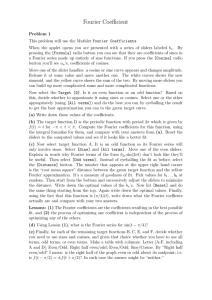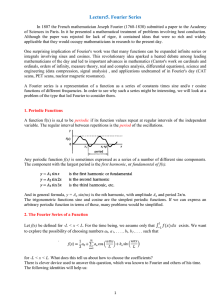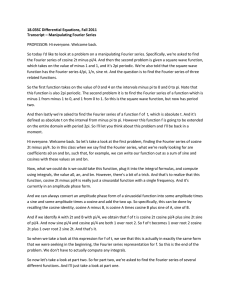Document 13464562
advertisement
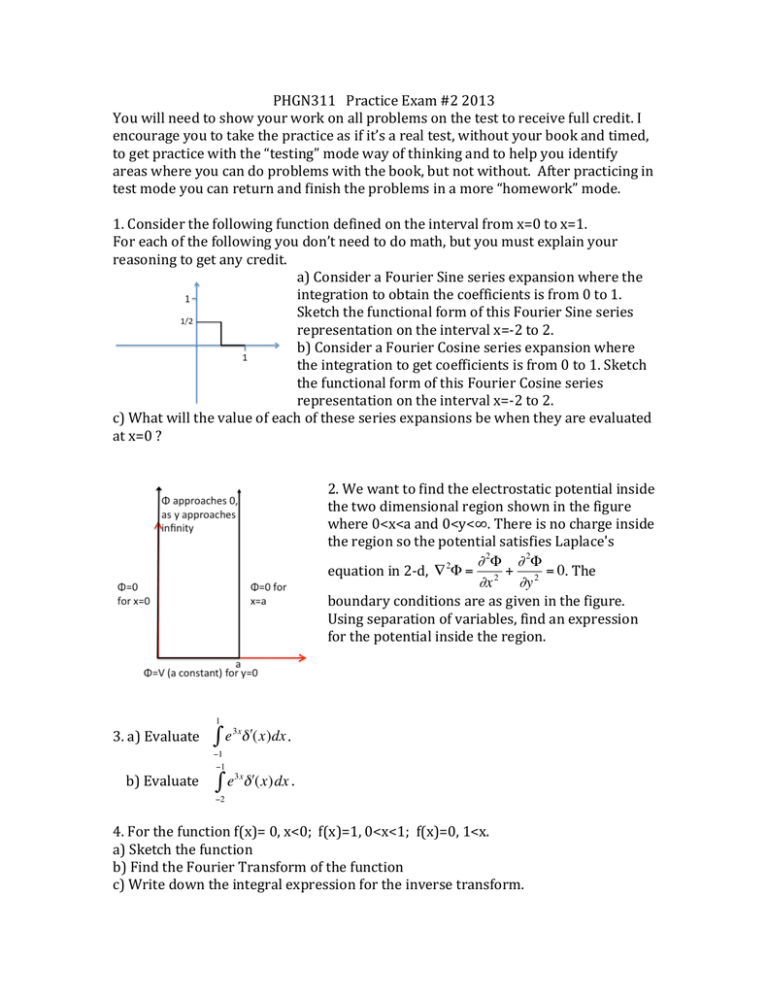
PHGN311 Practice Exam #2 2013 You will need to show your work on all problems on the test to receive full credit. I encourage you to take the practice as if it’s a real test, without your book and timed, to get practice with the “testing” mode way of thinking and to help you identify areas where you can do problems with the book, but not without. After practicing in test mode you can return and finish the problems in a more “homework” mode. 1. Consider the following function defined on the interval from x=0 to x=1. For each of the following you don’t need to do math, but you must explain your reasoning to get any credit. a) Consider a Fourier Sine series expansion where the integration to obtain the coefficients is from 0 to 1. Sketch the functional form of this Fourier Sine series representation on the interval x=-­‐2 to 2. b) Consider a Fourier Cosine series expansion where the integration to get coefficients is from 0 to 1. Sketch the functional form of this Fourier Cosine series representation on the interval x=-­‐2 to 2. c) What will the value of each of these series expansions be when they are evaluated at x=0 ? 2. We want to find the electrostatic potential inside the two dimensional region shown in the figure where 0<x<a and 0<y<∞. There is no charge inside the region so the potential satisfies Laplace's ∂ 2Φ ∂ 2Φ equation in 2-­‐d, ∇ 2Φ = 2 + 2 = 0. The ∂x ∂y boundary conditions are as given in the figure. Using separation of variables, find an expression for the potential inside the region. € 1 3. a) Evaluate ∫e δ "(x)dx . 3x −1 −1 b) Evaluate ∫ e3xδ !(x)dx . −2 € 4. For the function f(x)= 0, x<0; f(x)=1, 0<x<1; f(x)=0, 1<x. a) Sketch the function b) Find the Fourier Transform of the function c) Write down the integral expression for the inverse transform. # y& Sin% ( $2' dy d) Use the integral expression to show: π = ∫ y −∞ . ∞ 5. Consider the complex Fourier series expansion of the periodic function f (x) nπx ∞ i C€ e l . Argue that if f (x) is odd, then C = -­‐ C . (period 2l ) where f (x) = ∑ n=−∞ € n -­‐n n




